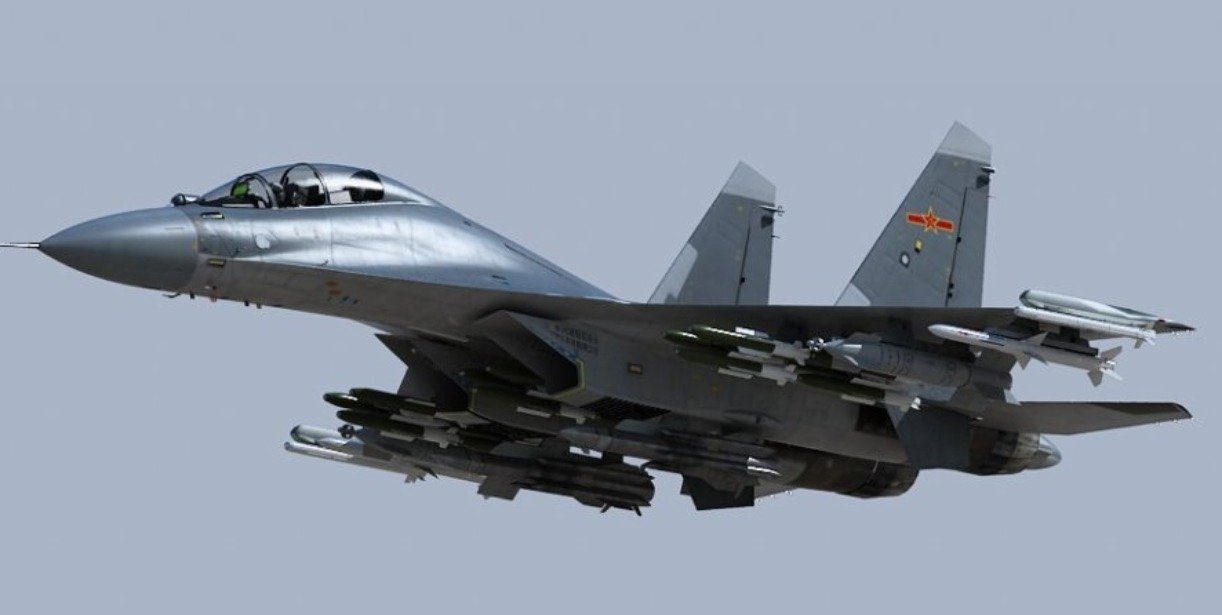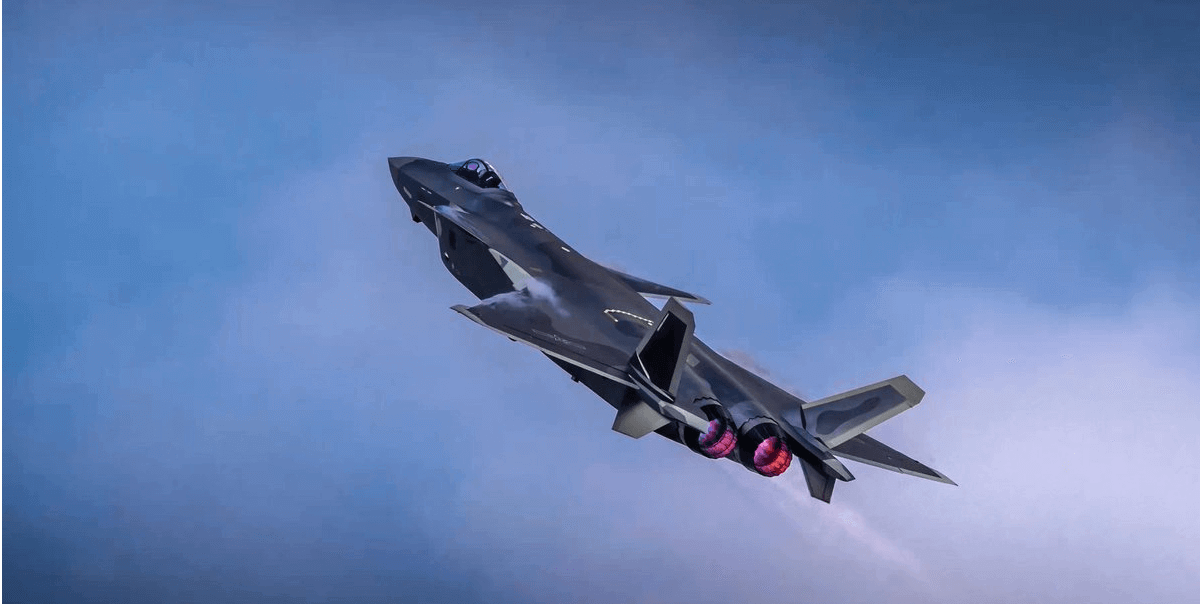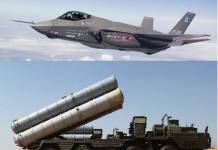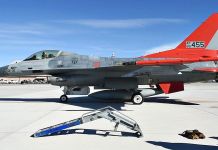The Chinese state media has disclosed three cases of high-value interceptions involving the J-16, the carrier-based J-15, and the J-20 fifth-generation stealth fighters.
The disclosure of this previously unknown and rather ambiguous information comes as Beijing is regularly accused of conducting dangerous interceptions of foreign aircraft, typically flying on patrol missions in international airspace near China. Several such cases have been recorded over the South China Sea and Western Pacific in the past two to three years.
China typically maintains that these interceptions are a response to provocation by foreign forces, rather than acts of provocation.
Below is a detailed breakdown of disclosures involving the three aircraft made by the Chinese state broadcaster.
Two J-16s Expel A Foreign Aircraft
The first case pertains to the J-16, which is considered the mainstay of the People’s Liberation Army Air Force (PLAAF).
CCTV released a video on June 29 showing how two J-16 fighter jets were dispatched by the Chinese military to warn and drive out a foreign aircraft that allegedly breached China’s territorial sea boundary.
“The foreign aircraft flew over at a low altitude, not very disciplined, almost at a vertical 90 degrees, breaching our territorial sea line,” air force aviation brigade member Zhang Zhanfang, who also piloted one of these jets, was quoted as saying by Global Times.
Zhang said that he flew to the side and slightly ahead of the foreign aircraft, steadily closing the distance and pushing it away from the territorial sea boundary. “After I completed this maneuver, it changed direction, but continued to circle and came toward our territorial sea line again,” he claimed. The tower also warned the aircraft, saying: “You are approaching Chinese airspace, please leave immediately, or bear the consequences!”
The Chinese media did not disclose the exact date or location of the incident, making it challenging to decipher which foreign aircraft it was referring to.

In February 2025, two J-16s were reported to have challenged an Australian P-8 aircraft in international airspace above the South China Sea. At the time, the Royal Australian Air Force (RAAF) accused the J-16 of deploying within 30 meters of the P-8 Poseidon.
In response, Guo Jiakun, a spokesperson for China’s foreign ministry, said Australia had “jeopardized” China’s national security and that the Chinese side had taken “proper, legal, and professional measures to exercise restraint.”
It cannot be verified whether the report refers to the February incident, especially since there have been multiple instances of J-16 intercepting foreign aircraft.
For instance, a Chinese J-16 fighter jet intercepted an Australian P-8 Poseidon surveillance plane in international airspace over the South China Sea in May 2022—the first of such dangerous interceptions. A year later, in May 2023, it performed a dangerous maneuver by abruptly crossing the path of the US RC-135 Rivet Joint reconnaissance aircraft.
In a documentary, China released a real footage of PLA J16 intercepting Australian P-8A Poseidon by releasing IR decoy flare.
— Li Zexin (@XH_Lee23) September 13, 2024
Beijing claims almost the entire South China Sea as its sovereign territory. It regularly dispatches the J-16 to intercept and expel any aircraft seen flying over areas claimed by the Chinese government.
The J-16, as recently explained in-depth by the EurAsian Times, is considered one of the three primary fighters of the PLAAF, alongside the J-10C and the J-20.
Chinese experts have stated that, although the J-16 is reverse-engineered from the Su-27 Flanker aircraft, it has been modified and upgraded to become the “most advanced Flanker in the world.”
Chinese military experts project the J-16 as one of the most advanced 4th-generation aircraft, and one that can outflank the Indian Su-30, the American F-15EX, and the Russian Su-35.
J-15s Are Not Far Behind In Interceptions
The Chinese state media also disclosed a major interception conducted by the J-15, China’s sole carrier-based combat aircraft.
According to CCTV claims reported by the Global Times, the J-15 aircraft took off with missiles in response to “severe provocations” in May 2022, when the Liaoning aircraft carrier was engaged with two foreign aircraft carriers.
The report stated that during the far-sea sorties conducted by the Liaoning aircraft carrier task group in May 2022, two foreign aircraft carrier groups from the east and south regularly deployed their aircraft for observation and surveillance.
In response, the J-15s armed with missiles closely pursued the foreign aircraft from an altitude of 8000 meters down to 2000 meters. Thus, the aircraft was successfully chased away.
The report did not disclose the exact date and location of the incident or the name of the aircraft that was intercepted by the J-15. However, we know that the Liaoning was stationed in the Philippines Sea for a three-week training deployment in May 2022.
The carrier conducted approximately half of its flight operations between 500 and 600 nautical miles from China, according to a USNI report. The remaining flying days took place in a location east of Taiwan, which was still between 300 and 400 miles from a divert airstrip.
The latest disclosure by Chinese media comes days after Japan accused the J-15 of conducting dangerous interceptions of the P-3C Orion aircraft over the high seas of the Pacific on two different days earlier this month, as reported by the EurAsian Times.

Separately, the Chinese media also published footage of a J-15 fighter jet launching from an aircraft carrier at an unidentified location in the Western Pacific to drive out enemy planes that were believed to be attempting mock attacks on the Chinese carrier group.
The report did not disclose the date of the incident, and the EurAsian Times cannot verify whether it is the same incident as the one that occurred in May 2022.
Before this, the Chinese media had aired footage of a J-15 intercepting an unidentified object, which military experts later identified as a US F/A-18 Super Hornet. The interception was described as “dangerous,” but specific details such as the exact date, location, and outcome were not provided.
Thus, it indicates that carrier-based aircraft are extensively deployed for interceptions.
The J-20 Mighty Dragon Also Chased Away Aircraft
The CCTV broadcast also reportedly showed how China’s fifth-generation J-20 stealth fighters responded when an unidentified foreign military plane approached Chinese airspace.
According to the report, the J-20 aircraft swiftly transitioned from training to combat, taking off one by one to confront the threats. The foreign military aircraft were expelled after several rounds of fierce attack and defense, it stated.
The report did not disclose the date of the incident or the foreign aircraft in question.
Multiple reports in the official state media have suggested that the J-20 stealth fighter is a crucial player in intercepting foreign aircraft. For instance, in March 2022, US Pacific Air Force Commander General Kenneth Wilsbach revealed that the J-20 of the PLA Air Force and the F-35 of the US Air Force had their first-ever ‘encounter.’
At the time, the US General said, “It’s a bit early to say what they intend to do with the J-20, so really all we’ve seen it do is air superiority. But we notice that they are flying it pretty well. We recently had – I wouldn’t call it an engagement – where we got relatively close to the J-20s along with our F-35s in the East China Sea, and we’re relatively impressed with the command and control associated with the J-20.”

Similarly, in March 2024, some reports in Chinese media stated that an unknown number of J-20s had just landed when they received news of foreign military aircraft approaching Chinese airspace. They immediately took off to intercept the threat.
The aircraft operator, precise time, and position were not specified in the report. However, experts conjectured that it could be the F-35A from the Kadena Air Base.
EurAsian Times does not speculate or endorse that the incident involving the J-20 was directed at an F-35.
Moreover, stealth jets are typically not the first choice for “simple” duties, such as intercepting and identifying foreign warplanes in the ADIZ, due to their high operational expenses and the requirement to protect radar evasion settings. Thus, their deployment for such roles is perhaps contingent on the threat perception.
Nonetheless, these disclosures are significant as they correspond with the growing Chinese military presence in the Indo-Pacific and beyond. It also reflects the aggression with which the PLA asserts its territorial claims.
A Chinese military affairs expert, Cao Weidong, reportedly said on CCTV that, typically, a warning is broadcast by radio on a global public frequency; however, some nations take provocative action by flying along or close to their territorial sea boundary.
“Our aircraft can fly parallel to the foreign aircraft, and if it moves closer inward, we can approach, warn, and drive it away. And if it enters our territorial sea and airspace, that’s a different matter,” said Cao, suggesting that firing shots is permissible where warnings go unheeded and are ineffective.
- Contact the author at sakshi.tiwari9555 (at) gmail.com
- Follow EurAsian Times on Google News




